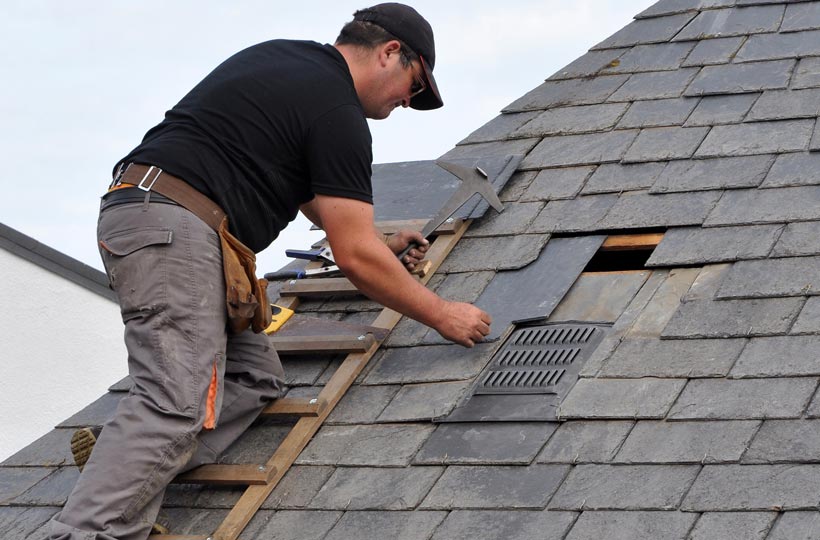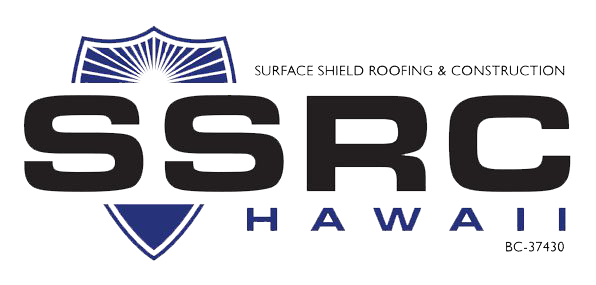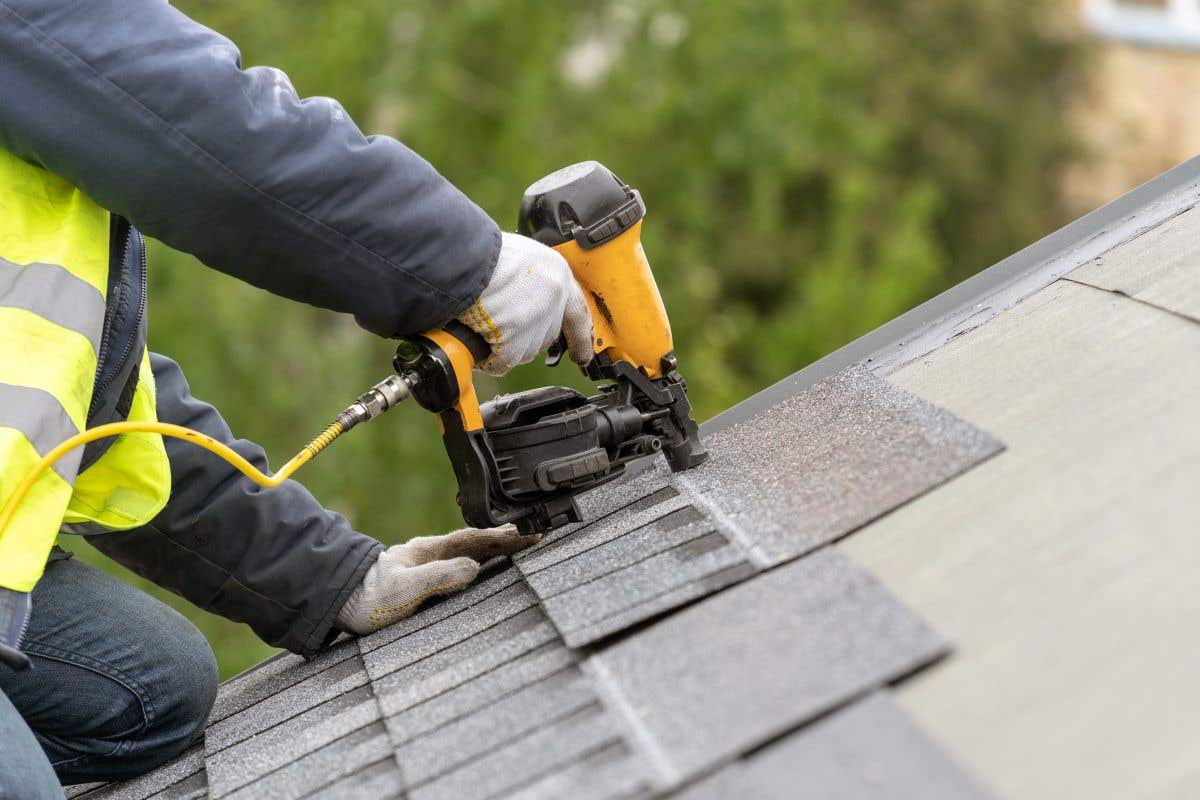Understanding the Different Sorts Of Roofs: A Comprehensive Guide for Homeowners
With a range of alternatives-- varying from the conventional gable to the modern flat-- each type offers distinct benefits and difficulties that should straighten with the house owner's specific demands and environmental factors to consider. As we discover the complexities of numerous roofing system kinds, it becomes noticeable that one size does not fit all; the appropriate option might amaze you.
Gable Roofing Systems
Saddleback roofs, defined by their triangular form, are among one of the most popular roof designs due to their simpleness and effectiveness in dropping water and snow. This layout features 2 sloping sides that fulfill at a ridge, enabling reliable drainage and reducing the threat of water buildup. The high pitch generally connected with saddleback roofs enhances their capability to take care of heavy precipitation, making them appropriate for numerous climates.
In addition to their functional advantages, saddleback roofs provide visual convenience. They can be adapted to different building designs, from typical to modern homes. The design can likewise fit added attributes such as dormer home windows, which enhance natural light and ventilation in the attic space.
Additionally, gable roof coverings give ample space for insulation, adding to energy effectiveness. House owners can select from a selection of roofing materials, including asphalt shingles, metal, and tiles, further enhancing customization options.
Despite their advantages, gable roofs may call for added assistance in locations susceptible to high winds or heavy snowfall. In general, the saddleback roof remains a favored choice as a result of its mix of capability, durability, and aesthetic charm.
Flat Roofs
Flat roofs are often identified for their minimal style and practical applications, particularly in business and commercial setups (oahu roofing). These roofing systems feature a nearly horizontal or horizontal surface area, which enables for easy construction and functional area usage. While they might do not have the aesthetic appeal of angled roofs, level roofings offer countless advantages, especially in city environments where optimizing space is crucial
Among the primary advantages of flat roofings is their accessibility. Home owners can use the roof area for numerous functions, such as roof gardens, balconies, or solar panel setups. In addition, flat roof coverings are usually extra affordable to mount and maintain compared to their sloped equivalents, as they call for fewer materials and labor.
Usual products made use of for level roof coverings consist of built-up roof covering (BUR), changed asphalt, and single-ply membrane layers, each offering distinctive advantages. On the whole, level roof coverings offer as a versatile and practical option for numerous property owners and companies alike.
Hip Roofing Systems
Hip roofing systems are characterized by their sloped sides that converge on top, creating a ridge. This style stands out from gable roofing systems, as all four sides of a hip roofing slope downwards toward the wall surfaces, giving an extra steady structure. The angle of the inclines can differ, enabling flexibility in architectural visual appeals and functionality.
Among the main advantages of hip roof coverings is their capacity to endure heavy winds and damaging weather condition conditions. The sloped surface areas allow better water drain, minimizing the risk of leakages and water damage. In addition, hip roofings provide raised attic space, which can be used for storage and even exchanged livable locations.
However, creating a hip roofing system can be more expensive and complex than easier roof kinds, such as gable roofs. The added product and labor included in creating the slopes and making sure correct structural honesty can bring about greater costs. Despite these disadvantages, lots of homeowners favor hip roof coverings for their toughness, aesthetic allure, and capacity for power effectiveness.
Mansard Roof Coverings
Mansard roofs, commonly recognized by their distinct four-sided layout, attribute two slopes on each side, with the reduced incline being steeper than the top. This architectural style, originating from France in the 17th century, is not just cosmetically enticing but practical, as it maximizes the usable area in the upper floorings of a structure. The high reduced incline permits more headroom, making it a suitable selection for attic rooms or loft spaces, which can be transformed right into he has a good point living rooms.
Mansard roof coverings are characterized by their flexibility, accommodating different architectural styles, from conventional to modern-day. They can be built with different materials, including asphalt roof shingles, slate, or metal, offering property owners with a variety of choices to fit their budgets and preferences. Additionally, the layout permits the assimilation of dormer home windows, boosting all-natural light and ventilation in the upper levels.
However, it is important to consider the potential downsides. Mansard roof coverings might need more maintenance as a result of the intricacy of their style, and their steep inclines can be testing for snow and rain runoff. On the whole, mansard roof coverings integrate beauty with practicality, making them a preferred selection among homeowners looking for distinct building features.
Lost Roofings
As property owners increasingly look for simplicity and capability in their building designs, lost roofing systems have actually emerged as a popular selection. Characterized by a solitary sloping airplane, a shed roof provides a minimalist aesthetic that complements different home styles, from modern to rustic.
Among the key advantages of a shed roof covering is its straightforward building, which often equates to decrease labor and product costs. This style enables efficient water drainage, minimizing the threat of leaks and water damages. Additionally, the vertical slope gives ample space for skylights, improving all-natural light within the inside.
Shed roofing systems look these up likewise use versatility more in terms of usage. They can be efficiently integrated right into enhancements, garages, or outside structures like structures and sheds. Furthermore, this roofing system style can fit numerous roof covering products, consisting of steel, asphalt tiles, and even green roofs, aligning with environment-friendly efforts.
Nonetheless, it is vital to consider regional environment problems, as hefty snow tons may require modifications to the roofing system's angle or structure. Overall, shed roofs offer a sensible and cosmetically pleasing alternative for house owners seeking to optimize performance without jeopardizing style.
Verdict


Gable roofing systems, identified by their triangular form, are among the most prominent roof covering designs due to their simplicity and efficiency in losing water and snow. oahu roofing. The steep pitch frequently connected with gable roofing systems boosts their capacity to deal with heavy rainfall, making them ideal for various climates
While they may lack the visual allure of pitched roofs, flat roofing systems use countless benefits, especially in urban atmospheres where making the most of area is critical.
